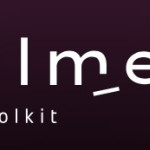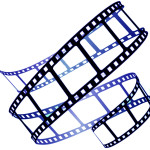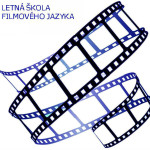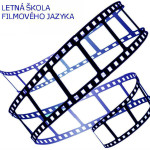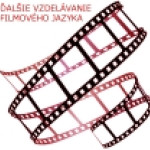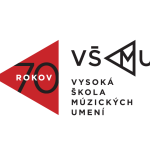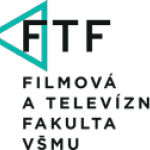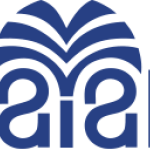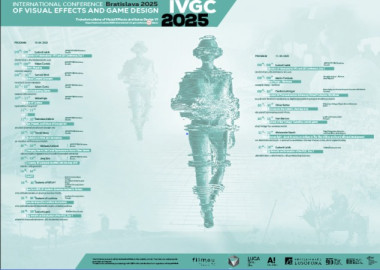
Live 360° streamed presentations from the IVGC 2024, International conference on April 10, 2025, the 1st day
Live 360° streamed presentations from the IVGC 2024, International conference on April 11, 2025, the 2nd day
IVGC Bratislava 2025 - Visual Effects Transformations VI
IVGC is a two-day international conference organized by the Visual Effects and Game Design Department of the Film and Television Faculty of the Academy of Music and Dramatic Arts in Bratislava every year in April. It is the 12th continuation of the VFX Department's activities in the search for the development of visual effects and the 6th continuation, which strives for an international level of interpreted scientific knowledge. It takes place simultaneously as a face-to-face and distance meeting of students via video conference connection using the MS TEAMS program.
This year, IVGC took place on April 10-11, 2025.
The conference is intended primarily for students of VFX and GD study programs at schools operating in Europe, but also for external amateur or professional interested parties in both the domestic and international contexts.
The language of communication is English.
The task is to introduce participants, create opportunities for future collaborations, and inform not only participants but also any interested parties about the current level of VFX and GD in Europe.
The conference event is aimed at international collaborations between the FilmEU+ association of 8 European universities.
The presentations are recorded in the TEAMS program and the conference is streamed live on the YouTube channel with a 360° camera.
After editing, individual video contributions are shared via the WEB pages: www.avfx.sk , www.ahd.avfx.sk and through the websites of participating foreign schools. The presentations are available to a wide professional public.
The conference is complemented by the production of an electronic written document, the IVGC 2025 Proceedings, which is a written visual recording of the individual presentations of both conference days. The Proceedings also include contributions that were not presented at the videoconference presentations, but are an important perspective on the professional and pedagogical environment of VFX and GD in the world.
Program: DAY 1
| 9:00 | 9:15 | Ľudovít Labík - Introduction of International VFX and GD Conference |
| 9:15 | 9:45 | Viliam Čorňák, študent VFX, FTF VŠMU, Slovensko. Projection Mapping. |
| 9:45 | 10:15 | Samuel Biroš, študent VFX, FTF VŠMU, Slovensko. Procedural Content Generator. |
| 10:15 | 10:45 | Adam Čurko, študent VFX, FTF VŠMU, Slovensko. Reverse Engineering Games - Reverzné inžinierstvo hier. |
| 10:45 | 11:15 | Michal Fajta, študent VFX, FTF VŠMU, Slovensko. Pipeline of Careless - Pipeline filmu "Neopatrný". |
| 11:15 | 11:30 | Refreshments |
| 11:30 | 12:00 | Radoslava Kráľová, študent VFX, FTF VŠMU, Slovensko. The Past, Present, and Future of Concept Art - Minulosť, súčasnosť a budúcnosť Concept Artu. |
| 12:00 | 12:30 | Tomáš Sikora, študent VFX, FTF VŠMU, Slovensko. 3D simulations in films and animations - 3D simulácie vo filmoch a animáciách. |
| 12:30 | 13:00 | Michaela Svitková, študent VFX, FTF VŠMU, Slovensko. Bringing Fear to Life: Facial Expressions in Horror Video Games - Oživenie strachu: Prejavenie emócií na tvári v hororových videohrách. |
| 13:00 | 13:30 | Juraj Zbín, študent VFX, FTF VŠMU, Slovensko. Creating 3D animated shortfilm with the help of AI - Tvorba 3D animovaného krátkehoi filmu s pomocou AI. |
| 13:30 | 14:30 | Refreshments |
| 14:30 | 15:15 | Students of REPLAY (Lusófona University / Luca School of Arts / Aalto University), Portugal, Belgia, Finland 3 games from REPLAY students (Erasmus mundus in Games). Arya Rakha, Around the World (2024), Maja Milas, Bonita (2024), Aghababa Baghirov, Disquite Time (2024). |
| 15:15 | 16:00 | Students of Lusófona University, Lisbon, Portugal 3 games developed by Lusófona Ba students - 3 hry vyvinuté študentmi bakalárskeho stupňa Univerzity Lusófona. |
| 16:15 | 16:30 | Ľudovít Labík, Filipe Luz - Closing remarks and Evaluation of the IVGC, Day 1 |
Program: DAY 2
| 9:00 | 9:15 | Ľudovít Labík - Introduction of International VFX and GD Conference |
| 9:15 | 9:45 | Martin Petrásek, gameplay designér - Warhorse, Česká republika. Gameplay design - Warhorse. |
| 9:45 | 10:15 | Pauline Leininger, Master’s degree in Human-Computer Interaction from LMU Munich, Germany AI-Supported 3D Previsualizations: Enhancing Virtual Production Workflows - 3D prípravná vizualizácia s podporou AI: Zlepšenie pracovných postupov virtuálnej produkcie. |
| 10:15 | 10:45 | Ryan Laley & Oliver Rotter, CGSpectrum College of Digital Arts and Animation, Austria, Great Britain How to break and stay in the game industry, the philosophy of CGSpectrum. - Ako sa presadiť a zostať v hernom priemysle, filozofia CGSpectra. |
| 10:45 | 11:15 | |
| 11:15 | 11:45 | Ivan Barroso, PhD. student, Pedagogue at the University of Lusófona, Lisbon, Portugal. Development of the "vintage" GameBoy console game. - Vývoj "vintage" hry GameBoy console. |
| 11:45 | 12:15 | Aleksander Kauch, 11 bit studios S.A., Senior Technology Lead, Warszawa, Poland. Not all heroes fight - about focusing on civilians in This War of Mine and how it affected development - Nie všetci hrdinovia bojujú – o zameraní sa na civilistov v This War of Mine a o tom, ako to ovplyvnilo vývoj. |
| 12:15 | 12:30 | Ľudovít Labík, Filipe Luz - Closing remarks and evaluation of the IVGC 2025 |
Day 2: Professionals presenting their topics
1. Martin Petrásek, gameplay designer - Warhorse, Czech republic.
How to design game mechanics (what are the procedures and methods for verifying faulty game design).
2. Pauline Leininger, Master’s degree in Human-Computer Interaction from LMU Munich, Germany.
AI-Supported 3D Previsualizations: Enhancing Virtual Production Workflows.
3. Ryan Laley & Oliver Rotter, CGSpectrum College of Digital Arts and Animation, Austria, Great Britain.
How to break and stay in the game industry, the philosophy of CGSpectrum.
4. Ivan Barroso, Pedagogue at the University of Lusófona, Lisbon, Portugal.
Development of the "vintage" GameBoy console game.
5. Aleksander Kauch, Technical Director at 11 bit studios, Warszawa, Poland.
Not all heroes fight - everyday life in 'This War of Mine'
Day 1: MGR VFX department students presenting topics
1. Viliam Čorňák , VFX student, FTF VŠMU, Slovakia.
Projection Mapping.
2. Samuel Biroš , VFX student, FTF VŠMU, Slovakia.
Procedural Content Generator.
3. Adam Čurko , VFX student, FTF VŠMU, Slovakia.
Reverse Engineering Games.
4. Michal Fajta , VFX student, FTF VŠMU, Slovakia.
Pipeline of "Careless".
5. Radoslava Kráľová , VFX student, FTF VŠMU, Slovakia.
The Past, Present, and Future of Concept Art.
6. Tomáš Sikora , VFX student, FTF VŠMU, Slovakia.
3D simulations in films and animations.
7. Michaela Svitková , VFX student, FTF VŠMU, Slovakia.
Bringing Fear to Life: Facial Expressions in Horror Video Games.
8. Juraj Zbín, VFX student, FTF VŠMU, Slovakia.
Create 3D animated shortfilm with the help of AI.
9. Students of REPLAY (Lusófona University / Luca School of Arts / Aalto University), Portugal, Belgia, Finland.
3 games from REPLAY students (Erasmus mundus in Games). Arya Rakha, Around the World (2024), Maja Milas, Bonita (2024), Aghababa Baghirov, Disquite Time (2024)
10. Lusófona University students, Lisbon, Portugal.
3 games developed by Lusófona Ba students. Afonso Cunha, GoP!SSgirl (2025) and EPIC-WE Games, António Rodrigues, Game Creators Club, Lusófona Steam Collection.
BIO
Martin Petrásek, (Czech republic)
Renowned Czech game creator, known for his innovative approaches to game design. He graduated in computer science from Charles University in Prague. He has worked on several successful projects, including the popular game "Mystic Quest". In 2020, he founded his own game studio "Petrásek Games". His work has been recognized at international gaming conferences, including the Game Developers Conference. Martin is a passionate gamer and is constantly looking for new ways to push the boundaries of the gaming industry.
Pauline Leininger (Germany)
Pauline holds a Master’s degree in Human-Computer Interaction from LMU Munich. Passionate about the intersection of film and emerging technology, she has been a core member of the AI Lab at the University of Television and Film Munich since its inception in 2022. Specializing in visual generative AI, deepfake technology, and virtual production, Pauline not only researches the evolving role of AI in media production but also actively develops tools that harness AI to transform creative workflows. She also advises and collaborates on AI-related student projects.
Ryan Laley, (Great Britain)
Ryan Laley is a notable figure in the game development community and for years an integral part of the CGSpectrum College, being one of the core mentors to thrive innovation and keep the curriculum on the latest industry trends. He is known for his expertise in using Unreal Engine, a popular game development platform. He has gained recognition for his comprehensive tutorials and educational content, which he shares on various platforms such as YouTube and Twitch. He now runs his own independent studio developing a number of titles whilst remaining a Gold Academic Instructor for Unreal Engine and Epic Games.
Oliver Rotter, (Austria)
Oliver Rotter, over 10 years of experience in the tech industry as a developer and was once itself Student of Game Development at CGSpectrum, which helped him switch into the Game Industry, where he worked as a Game Producer on titles like Star Citizen and Squadron 42, as well as other projects. Reinforced the mentor core as an Assistant Mentor for the Unreal Connectors program and lately worked closely with Game Studios and Career Changer to help them on their journey.
Ivan Barroso, (Portugal)
Portuguese game designer and educator. He graduated in game design at the Instituto Politécnico de Leiria and is pursuing a PhD in media arts at the Universidade Lusófona. He has worked as academic coordinator of the ETIC program and project manager for PlayStation® First. He is co-founder of the GameNest® program, which supports the development of game projects. Ivan is the author of three books on the history of the video game industry and regularly speaks at international conferences. He currently teaches game design at the Universidade Lusófona and the Instituto Politécnico de Leiria.
Aleksander Kauch, (Poľsko)
With 14 years of experience at the company, he has worked on almost every production to date: the Anomaly series, This War of Mine, and Frostpunk. He led the technology team on Frostpunk 2 and is now working on an unannounced project. Highly skilled in programming, game architecture, and the production process. Academic tutor, project mentor, collector of old games, and a lover of their history.
Viliam Čorňák (AVFXHD, Bratislava)
A first-year master's student in visual effects at the Film and Television Faculty of the Academy of Performing Arts in Bratislava (FTF VŠMU). Since high school, he has been involved in filmmaking, graphic design, and visual effects. Currently, he is primarily focused on the 3D aspect of visual effects but also works with compositing. He obtained his bachelor's degree in visual effects at FTF VŠMU.
https://www.avfx.sk/pouzivatel/cornak-viliam
Samuel Biros (AVFXHD, Bratislava)
He is a first-year master's student in visual effects at FTF VŠMU in Bratislava. Originally, he studied computer science in high school and at the bachelor's level at the University of Economics in Prague, where he earned his degree. Despite his technical background, he was always drawn to the artistic field. During his university studies, he transitioned from 2D graphics to UI/UX design and eventually to 3D graphics. In the 3D field, he is most passionate about motion design. He works with software such as Blender, Unreal Engine, and most recently, Houdini.
https://www.behance.net/samuelbiros
Adam Čurko (AVFXHD, Bratislava)
A first-year master's student in visual effects at FTF VŠMU in Bratislava. Originally a student at the secondary school "UAT," he focused on filmmaking and audiovisual arts. Toward the end of his studies, he began collaborating with classmates, which led him to work with 3D graphics. These experiences sparked his interest in the newly established "Game Design" program at VŠMU in Bratislava, where he continued to refine his skills.Today, he specializes in game development using Unreal Engine 5, not only as a 3D artist but also as a scripter and technical artist.
Michal Fajta (AVFXHD, Bratislava)
Student of the first year of the master's degree in visual effects at the FTF VŠMU in Bratislava.
Since elementary school he’s experimenting with filmmaking and computer graphics. He graduated from Grammar school in Ružomberok. During his studies at VŠMU he received bachelor’s degree, while primarily focusing on the creation of full CG short films. Currently he works as a freelance compositor and 3D generalist at QQ Studio Ostrava.
https://www.linkedin.com/in/michal-fajta/
Radoslava Kráľová (AVFXHD, Bratislava)
Student of the first year of the Master's degree in Visual Effects at the Faculty of Fine Arts, Academy of Performing Arts in Bratislava. She studied Concept Art at the Secondary Vocational Art School in Košice. Since high school she has been focusing on character design. During her studies at high school she participated in a summer course of video game creation (Summer Game Dev). She received her bachelor's degree at the Faculty of Fine Arts of the Academy of Performing Arts in Game Design. She is currently working as a 2D character and concept artist on the game Frankie, in addition to studying and filmmaking.
https://ahd.avfx.sk/pouzivatel/kralova-radoslava
Tomas Sikora (AVFXHD, Bratislava)
A first-year master's student in visual effects at the Film and Television Faculty of the Academy of Performíing Arts. His passion for visual effects and filmmaking motivates him in everyday life to research various disciplines and techniques of digital image creation processes. In addition to his studies, he works parttime as a creator of 2D and 3D effects in the company Bluefaces. He received his bachelor's education at the FTF VŠMU in the field of visual effects.
Michaela Svitkova (AVFXHD, Bratislava)
First year student of the Master's degree in Visual Effects at the Faculty of Fine Arts of the Academy of Fine Arts in Bratislava. After graduating from the art school in Bratislava ŠUP Josef Vydra, which primarily focused on 2D art, I discovered a passion for 3D modeling and animation. Shortly after starting university, I got a job as a 3D character artist for three animated commercials that received a significant number of views on YouTube. This opportunity provided me with valuable experience in the field and allowed me to gain insight into the professional world of animation and character design. My career path took another exciting turn when I joined a small independent game development studio in Bratislava. There, I worked on a stylized nature-focused strategy game that won several awards for its art design and engaging gameplay.
https://www.avfx.sk/pouzivatel/svitkova-michaela
Juraj Zbín (AVFXHD, Bratislava)
Student of the first year of the master's degree in visual effects at the FTF VŠMU in Bratislava. He has been involved in computer graphics and video editing since high school. Around the end of his studies at the gymnasium, he became more interested in 3D graphics, which prevails to this day. He received his bachelor's degree at the FTF VŠMU in the field of visual effects. He started with creating graphics, editing photos, editing videos and ending up with creating his own short full cgi movies using the Blender software. With the arrival of artificial intelligence, he is trying to use it and incorporate it into his workflow. Currently, in addition to studying and making films, he is engaged in freelancing.
ttps://www.avfx.sk/pouzivatel/zbin-juraj
ABSTRACT
Martin Petrásek, (Czech republic) -
Pauline Leininger (Germany) - AI-Supported 3D Previsualizations: Enhancing Virtual Production Workflows
AI-supported 3D previsualizations offer a transformative approach to virtual production. In an era where AI is commonly used for generating concept images and storyboards, extending its reach into three-dimensional planning opens new creative horizons. By enabling the rapid creation of immersive 3D environments (generative or AI scene reconstructions like Gaussian Splats) and intuitive placement of characters and cameras, this method bridges creative vision with technical execution while preserving as much control as possible. It democratizes advanced planning tools, making them accessible to independent filmmakers and film schools that may lack specialized 3D expertise, therefore streamlining production workflows. In this context, we will also showcase our self-developed prototype tool. The presentation also touches on a broader paradigm shift toward AI world models and hints at future integrations with immersive XR technologies. Join us as we explore how embracing AI in 3D previsualization can reshape planning and on-set decision-making in today’s evolving virtual production landscape.
Ivan Barroso (Portugal) - Game for the "vintage" GameBoy console
Tinto’s Law© is a work of historical and nostalgic fiction in the form of a narrative RPG about a western set in the 19th century on Iberian soil. The game is available in 7 languages and is likely the first commercial title developed in Portugal for the entire Game Boy line (it is also compatible with Web Browsers—PC, MAC, or Mobile—and the Analogue Pocket console). The physical cartridge with box, manual, and game map is produced by Teknamic Software. The development team includes Master's students in Game Design and a professor from the Bachelor's program.
Trailer: https://youtu.be/ZAwA8prOuWE?
Ryan Laley & Oliver Rotter (Austria, Great Britain) - How to break and stay in the game industry, the philosophy of CGSpectrum
The biggest question for everyone, from the beginning to the actual accomplishment of the goal, is to how to break into the industry. Once that is achieved, usually the next question arises, how to actually stay in it and be successful. Those two questions are given the current circumstances in the industry more prevalent than ever. But that was already the integral question over a decade ago, when the founders of CGSpectrum founded the school through their experience in the Industry as veterans in their field. Since then, we continue to pursue those questions every year to keep up not only with the zeitgeist but make sure we are still aligned with our core philosophy. then, in the end, what matters is bringing our students to their goal, which is for most to achieve their dream career. Join us for a talk about the hero's journey of going from zero to a hero.
Aleksander Kauch, (Poland) - Not all heroes fight - everyday life in 'This War of Mine'
How to make a game about ordinary people? Can helplessness during harsh times be represented in a video game? How to portray the horrors of war from civilians perspective? Is interactive entertainment capable of taking harsh topics and present them in the language of video games? When creating This War of Mine the main principle was to not let the player be in a position of power and control. All our design decisions were strictly aligned with the story we wanted to tell. In this talk I will go through various game mechanics and artistic choices that allowed to create the harsh conditions of living everyday in the conflict zone.
Viliam Čorňák (AVFXHD, Bratislava) - Projection mapping
Projection mapping is an advanced projection technique that enables precise mapping of digital content onto irregular or moving surfaces, creating the illusion of a seamless connection between virtual and physical space. This technology has a wide range of applications in film and advertising production, interactive installations, and live performances, pushing the boundaries of traditional projection and bringing a new dimension to audiovisual communication. We will explore its technical aspects, software tools, and practical applications, as well as examine its impact on contemporary digital creation.
Samuel Biros (AVFXHD, Bratislava) - Procedural Content Generator
Procedural Content Generation (PCG) in Unreal Engine enables the automated creation of vast and diverse 3D scenes. Using PCG, we can efficiently generate forests, cities, or interiors with minimal manual effort. This system employs algorithms and rules to randomly distribute objects, ensuring uniqueness in every generated environment. In Unreal Engine, PCG is integrated into the workflow, allowing for easy customization and visual control over the results. The benefits include faster environment creation, reduced repetitive manual work, and increased variability in games and simulations. By combining procedural rules with manual adjustments, we can achieve realistic and aesthetically pleasing scenes. Unreal Engine provides tools like the PCG Graph, which enables intuitive setup of generators. Expansion options through Blueprints and C++ give developers flexibility in creating custom generators. Procedural generation is ideal for building large open worlds without the need for manually placing each object. As a result, PCG in Unreal Engine is a powerful tool for quickly generating realistic and dynamic 3D scenes.
Adam Čurko (AVFXHD, Bratislava) - Reverse Engineering Games
Reverse-engineering a game involves analyzing and deconstructing its mechanics, systems, and technical solutions to gain a deeper understanding of how they function. This knowledge can then be used to reconstruct such elements within one’s own project, adapting or improving on them. The lecture will focus on an example of such analysis and will describe the advantages and disadvantages of the reverse-engineering method.
Michal Fajta (AVFXHD, Bratislava) - Pipeline of "Careless"
Overview of technical solutions for the production of full CG short film in student environment. Problems such as collaboration, file sharing, folder structures and scene assebly are explored. A brief description of the creation of a shot, from storyboard to animatic, layout, proces of recording and animation using motion capture, simulations, lighting, rendering to compositing. It is also a presentation of tools created specifically for the film and the setup of a render farm.
Radoslava Kráľová (AVFXHD, Bratislava) - The Past, Present, and Future of Concept Art
Concept art is the bridge between imagination and reality, shaping the worlds of film, video games, and animation. From its early roots in the 20th century—when artists like Ralph McQuarrie helped bring Star Wars to life—to today’s cutting-edge digital techniques, concept art has evolved alongside technology. What began as traditional sketches and paintings has transformed into a vast digital playground, where AI, VR, and 3D sculpting are redefining the creative process. As we look to the future, the role of concept artists will continue to shift. Will AI-generated art enhance creativity or threaten artistic individuality? Will immersive tools like VR allow artists to step inside their creations before they even exist? One thing is certain: concept art will always remain the foundation of visual storytelling. For me, concept art isn’t just about creating visuals—it’s about telling a story, capturing emotion, and bringing dreams to life. In this presentation, I’ll explore the evolution of concept art, discuss its potential future, and share why this art form continues to inspire both artists and audiences alike.
Tomáš Sikora (AVFXHD, Bratislava) - 3D simulations in films and animations
Digital simulations are an integral part of creating visual effects for feature and animated films. Thanks to simulations, films can acquire the necessary realism or animation accuracy. The presentation includes an analysis of key simulation principles and their basic application in the 3D simulation program Houdini.
Michaela Svitkova (AVFXHD, Bratislava) - Bringing Fear to Life: Conveying Facial Emotion in Horror Video Games
The importance of facial expressions in video games is undeniable, as they significantly increase player immersion, support storytelling, and create a strong connection between the player and the characters. In horror games, subtle facial expressions create tension, fear, and suspicion, while the "uncanny valley" effect requires a balance between realism and stylization. The emotions of NPC characters influence the player's decision-making and their immersion in the game. The character creation process involves using tools like Character Creator and Scans to achieve a realistic base, sculpting in ZBrush to finely control expressions, and capturing authentic human emotions using Motion Capture in iClone. The combination of MoCap and hand-keyed animation increases realism. The implementation of facial expressions in Unreal Engine includes rigging and blendshapes, integration of Sequencer and Live Link for realistic animation, and AI-driven emotional reactions of NPC characters to player choices. Synchronizing dialogue with believable expressions using lip sync and voice acting is key to an authentic experience.
Juraj Zbín (AVFXHD, Bratislava) - Create 3D animated shortfilm with the help of AI
In the presentation, we will walk through the project pipeline and the integration of AI into the filmmaking process. AI was used from scripting, where it was collaborated with ChatGPT, to creating characters and assets using 2D AI-generated images converted into 3D space and digital geometry, all with the aim of streamlining production. While basic elements such as animation, shaders, lighting and compositing were done manually using Blender, AI also played a role in music generation. This presentation shows how AI can enhance creativity while keeping artistic control in the hands of the creator.
IVGC 2024
2024 International VFX and HD Conference Bratislava SK version 2024 International Conference VFX and GD Bratislava EN version 2024 International VFX and HD Conference Bratislava - Day 2 SK version 2024 International Conference VFX and GD Bratislava - Day 2 EN version
IVGC 2023
2023 International VFX and HD Conference Bratislava SK version 2023 International Conference VFX and GD Bratislava EN version
IVGC 2022
2022 International VFX and HD Conference Bratislava SK version 2022 International Conference VFX and GD Bratislava EN version 2022 Day 1 International VFX and HD Conference Bratislava SK version 2022 1st day of the International Conference VFX and GD Bratislava EN version 2022 Day 2 of the International VFX and HD Conference Bratislava SK version 2022 2nd day of the International Conference VFX and GD Bratislava EN version
IVGC 2021
2021 International VFX and HD Conference Bratislava SK version 2021 International Conference VFX and GD Bratislava EN version 2021 Day 1 International VFX and HD Conference Bratislava SK version 2021 1st day of the International Conference VFX and GD Bratislava EN version 2021 Day 2 of the International VFX and HD Conference Bratislava SK version 2021 2nd day of the International Conference VFX and GD Bratislava EN version
PROCEEDINGS
IVGC 2024 Proceedings IVGC 2023 Proceedings IVGC 2022 Proceedings IVGC 2021 Proceedings IVGC 2019



